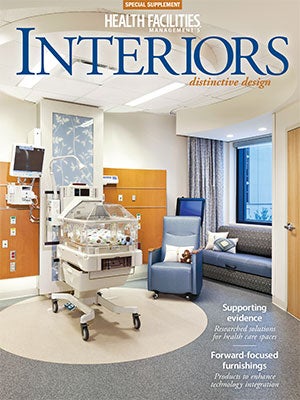Putting evidence to work
 |
| Supporting evidence By Amy Eagle Forward-focused furnishings By Amy Eagle |
We tend to hear more these days about the overall value of evidence-based design than we do about how research is being applied to specific health care facilities. And while there are many important discussions taking place about the value and limitations of evidence-based research in the design of hospitals and other health care facilities, it’s important to recognize how architects are using information to create safer, more efficient and overall better healing environments.
In this edition of Interiors, Amy Eagle provides insights from some leading health care design firms about the practical applications of evidence-based research. This report examines some of the real-world, problem-solving challenges in health care today.
From redesigning an outdated and undersized emergency department in New Jersey to meeting the needs of behavioral health patients to enhancing the patient experience at an outpatient center in Houston, we provide an inside look at how designers ultimately addressed these challenges.
Elsewhere, the report looks at how one design team solved the all-too-common challenge of reducing walking distances for nurses so that they can spend more time providing direct patient care. In addition, the designers discuss solutions that were implemented to improve sight lines to patients and how they enhanced ergonomics to reduce the chances of nurses and other staff from suffering back injuries.
Our second Interiors report has a similar focus — how design improvements help nurses to interface with the many areas of technology required in their environment.
This highly visual report provides many examples of furnishings and equipment that facilitate more convenient use of health care technology. There also are interesting examples of how movable wall systems are creating more flexibility for facilities that are undergoing rapid changes.
These and other solutions are prime illustrations of how facility design is addressing the changes happening in care delivery models.
A note of acknowledgment
The editors would like to thank the many vendors and health care design firms who participated in this supplement. The following sources provided images used in this project: DIRTT Environmental Solutions (Calgary, Alberta, Canada), Ergotron Inc. (St. Paul, Minn.), HKS, KI (Green Bay, Wis.), Modular Services Co. (Oklahoma City, Okla.), Nemschoff Inc. (Sheboygan, Wis.) and WHR Architects Inc. (Houston).




